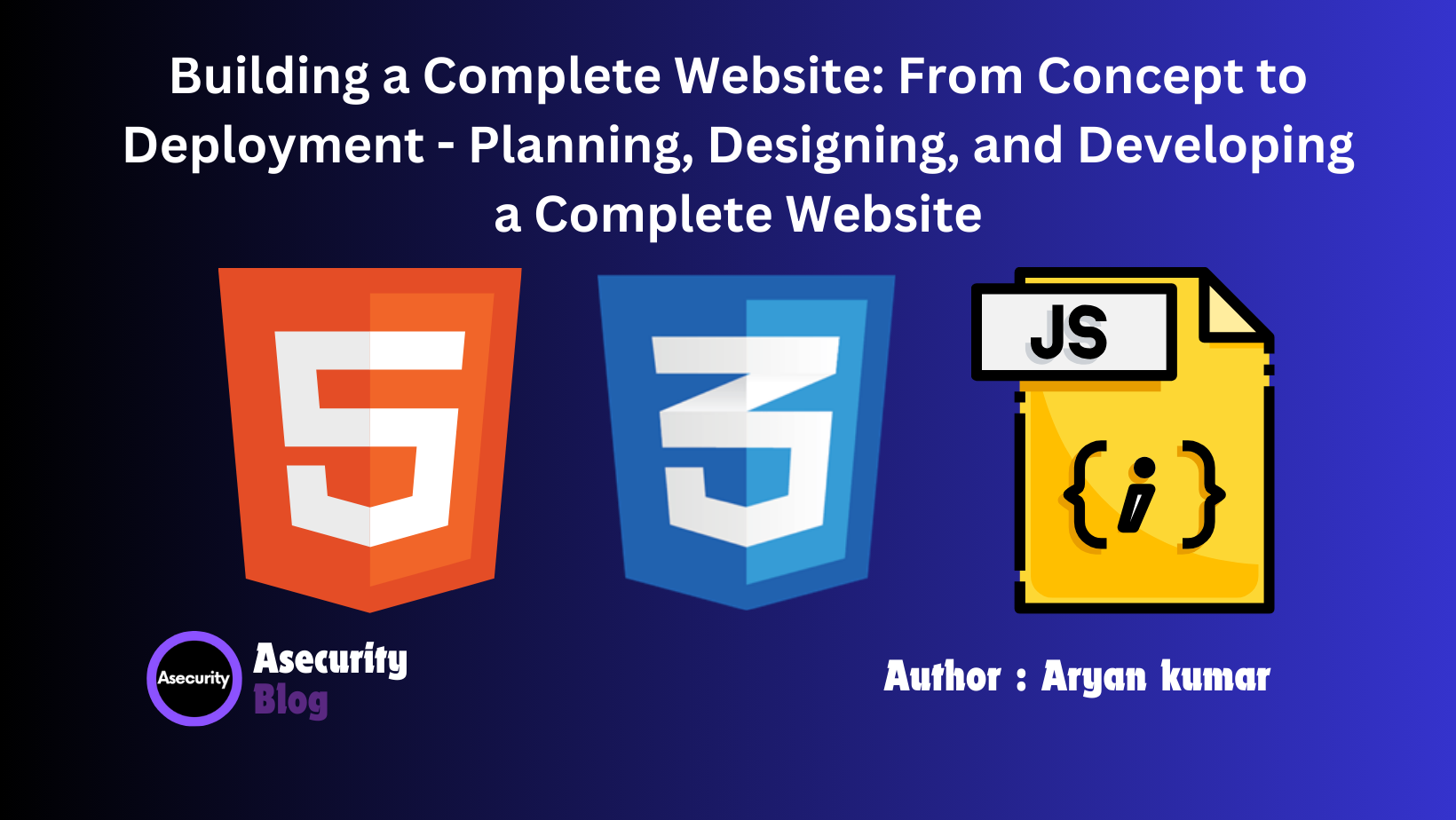Building a Complete Website: From Concept to Deployment - Planning, Designing, and Developing a Complete Website

Creating a website from scratch may seem daunting, but with a structured approach, it's manageable and fulfilling. This guide will walk you through each step, from conceptualization to deployment, ensuring you have a fully functional website by the end.
1. Planning Your Website
The foundation of a great website lies in thorough planning. Before jumping into code, it's crucial to define the purpose, target audience, and goals of your website.
- Purpose: What is the website for? Is it an online portfolio, a blog, or an e-commerce platform?
- Target Audience: Who will visit your site? Identifying your audience will guide your design choices, content, and functionality.
- Goals: What action do you want visitors to take? (e.g., subscribe, purchase, or contact)
Once these are defined, create a sitemap to outline the structure of your website. List the essential pages like Home, About, Services, Contact, etc., and identify the flow between them. This helps in organizing content and making navigation intuitive for users.
2. Designing the User Interface
Design is not just about aesthetics—it’s about functionality and user experience (UX). Your design should cater to the preferences of your target audience while ensuring the site is easy to navigate.
- Wireframing and Mockups: Start by sketching wireframes of your pages, focusing on layout and structure. Tools like Figma or Adobe XD can help create interactive mockups for a visual representation of the website.
- Responsive Design: Your site must be accessible on all devices—desktops, tablets, and smartphones. Leverage media queries to ensure a smooth experience across varying screen sizes.
- Color Schemes and Typography: Choose a color palette that aligns with your brand. Use easy-to-read fonts and consistent styling to maintain professionalism. Remember, contrast between text and background is critical for readability.
- User Experience (UX): Ensure that interactions (buttons, links) are obvious and intuitive. A good rule of thumb is that a user should never have to think about how to use your site.
3. Developing the Website
Now comes the fun part—building the website.
- HTML Structure: Start by laying down the skeleton of your website with HTML. This includes creating the necessary elements like navigation bars, sections, articles, and forms. Use semantic HTML to make the structure clear and accessible.
- CSS for Styling: Apply CSS to bring your design to life. Use flexbox or CSS Grid for layout purposes, ensuring that your site remains responsive. Add animations and transitions to enhance user interaction, but don't overdo it—keep things smooth and purposeful.
- JavaScript for Interactivity: Introduce JavaScript to add dynamic elements to your website. This includes things like a responsive navigation bar, image sliders, or form validation. Use modern JavaScript features (e.g.,
let,const, arrow functions) for cleaner, more efficient code.
4. Testing Your Website
Testing ensures your website functions as intended on different browsers and devices. Key aspects to check:
- Cross-browser Compatibility: Ensure your site looks and works well on Chrome, Firefox, Safari, and Edge.
- Responsiveness: Test the site on different screen sizes, from smartphones to large desktop monitors.
- Loading Speed: Optimize images, minify CSS and JavaScript, and leverage browser caching to improve site speed. You can use tools like Google PageSpeed Insights to get insights into performance.
- Accessibility: Make sure your website is usable by people with disabilities. Use alt text for images, maintain good contrast, and enable keyboard navigation.
5. Deploying the Website
Once your site is ready and thoroughly tested, it's time to make it live.
- Choosing a Hosting Provider: Select a reliable hosting service. Shared hosting is great for small websites, while VPS or dedicated servers are better for larger, resource-heavy sites.
- Domain Name: Purchase a domain name that reflects your brand. Tools like Namecheap or GoDaddy are popular options.
- Setting up Version Control: Use GitHub or Bitbucket for version control, allowing you to track changes, collaborate with others, and roll back to earlier versions if necessary.
- Deployment Tools: Tools like Netlify, GitHub Pages, or hosting services like Bluehost and SiteGround provide easy-to-use interfaces to deploy your website with a few clicks.
6. Maintaining Your Website
Deployment isn’t the end. Websites need regular updates to ensure they remain secure, functional, and relevant.
- Content Updates: Keep your website fresh with regular content updates, especially if it’s a blog or news site.
- Performance Monitoring: Use tools like Google Analytics or Hotjar to track user behavior and site performance.
- Security Updates: Regularly check for software updates, especially if you’re using CMS platforms like WordPress. Install security patches and backup your site frequently.
Conclusion
Building a website from concept to deployment is an exciting process that allows you to bring your ideas to life on the web. With proper planning, a thoughtful design approach, and a focus on functionality, your website can engage users and achieve its intended purpose effectively. Remember, a successful website is never truly finished—regular updates and improvements keep it thriving.
By following these steps, you'll not only build a functional website but also create a powerful online presence that can scale with your goals.
Happy coding!
Author: Aryan Kumar is a web developer specializing in HTML, CSS, and JavaScript, working at Asecurity. Contact here (Instagram) : @aryan_geek .
#webdevelopment #html #css #javascript

